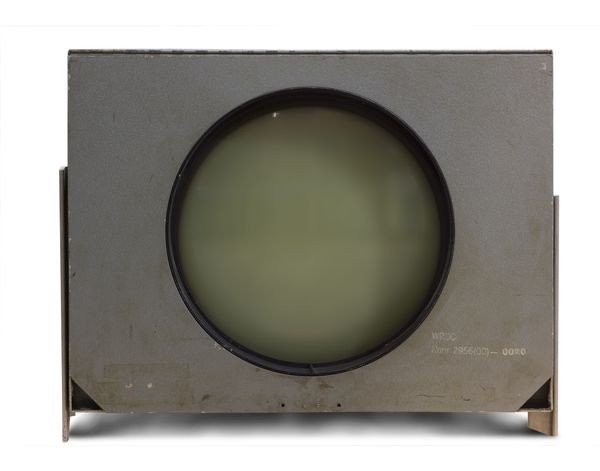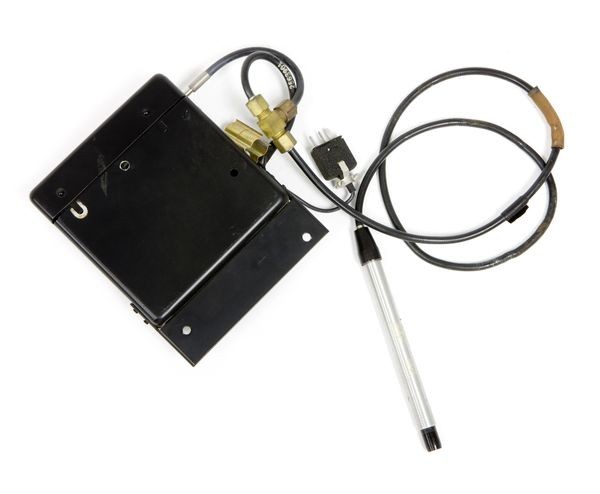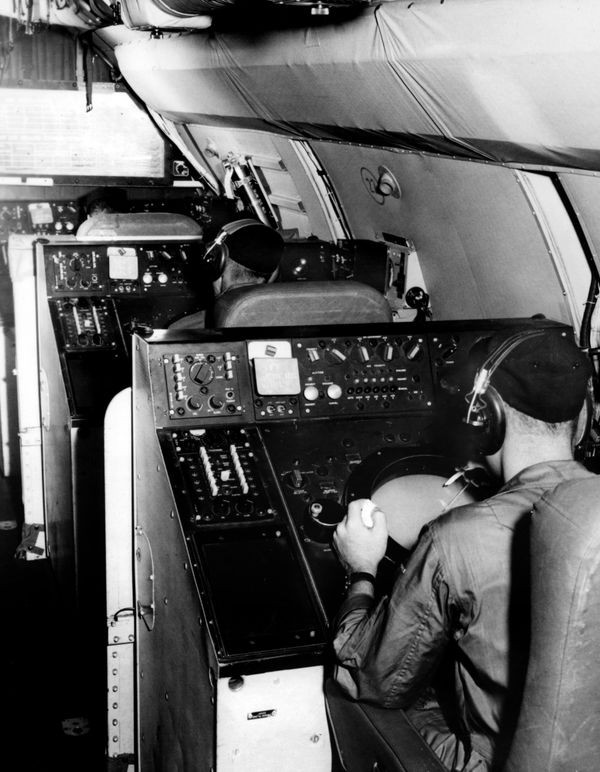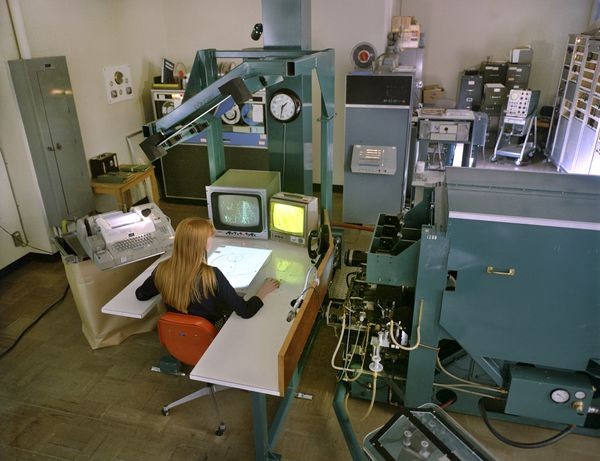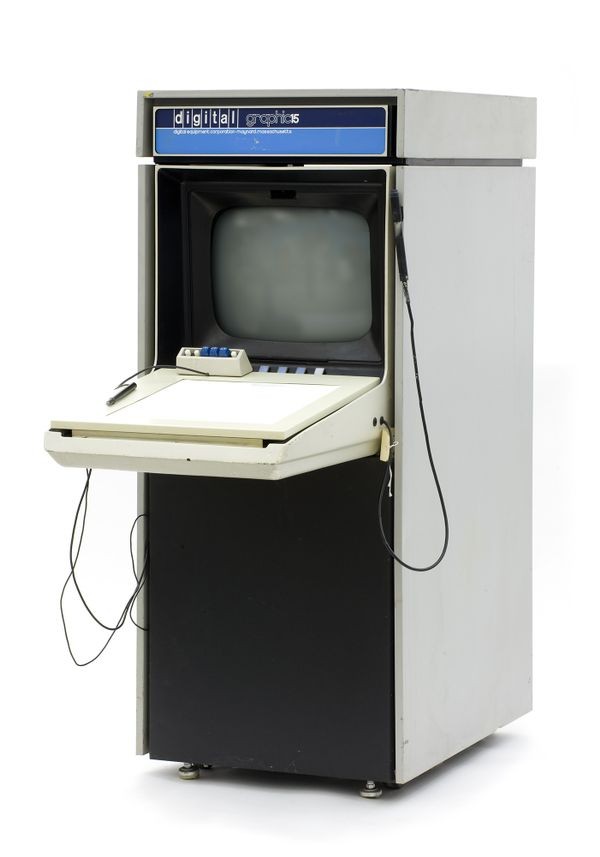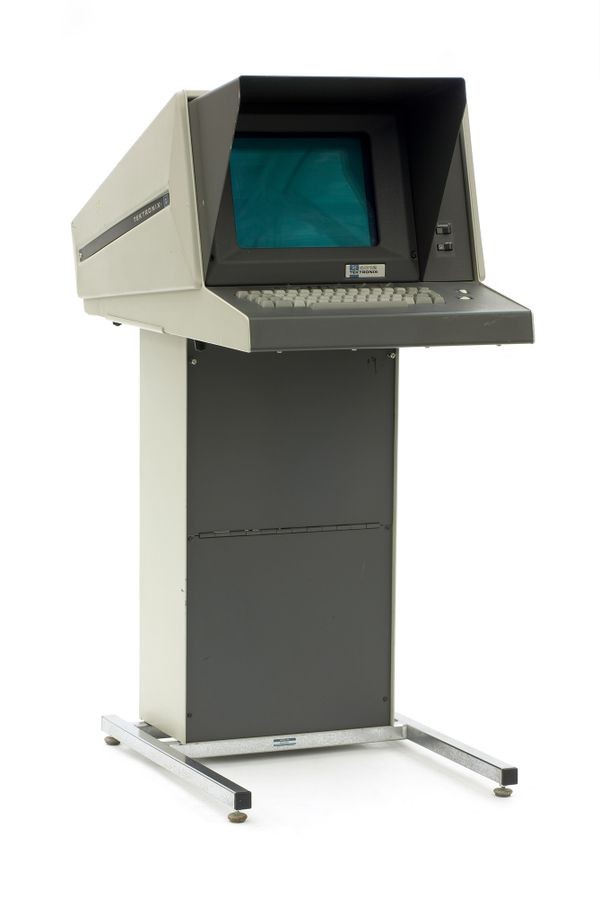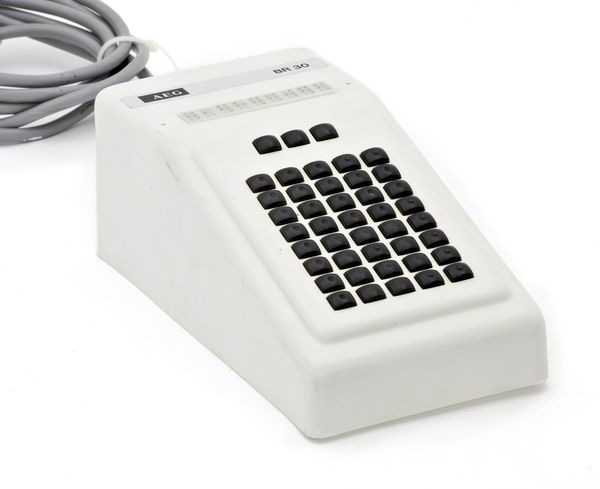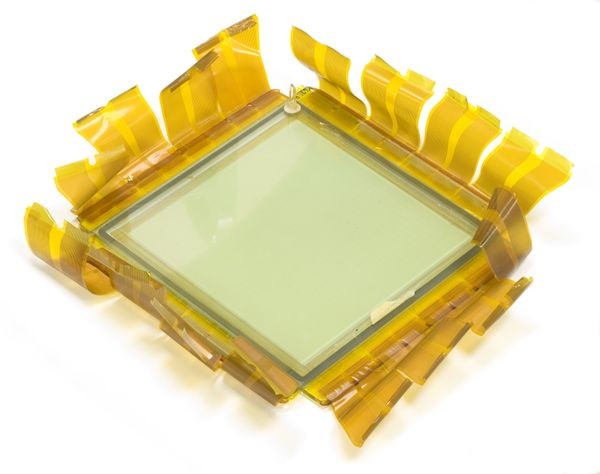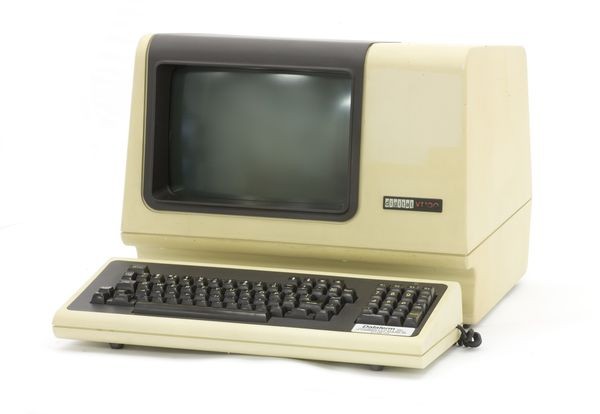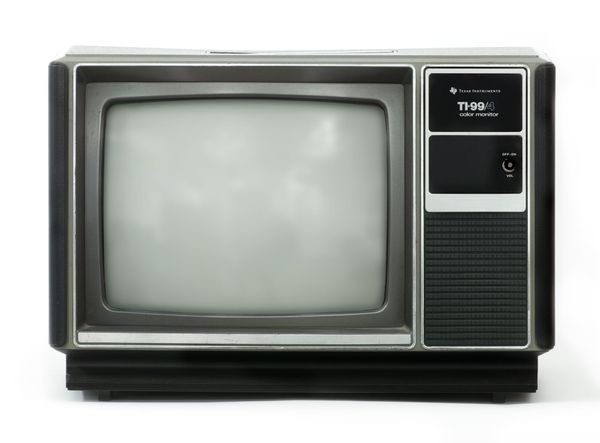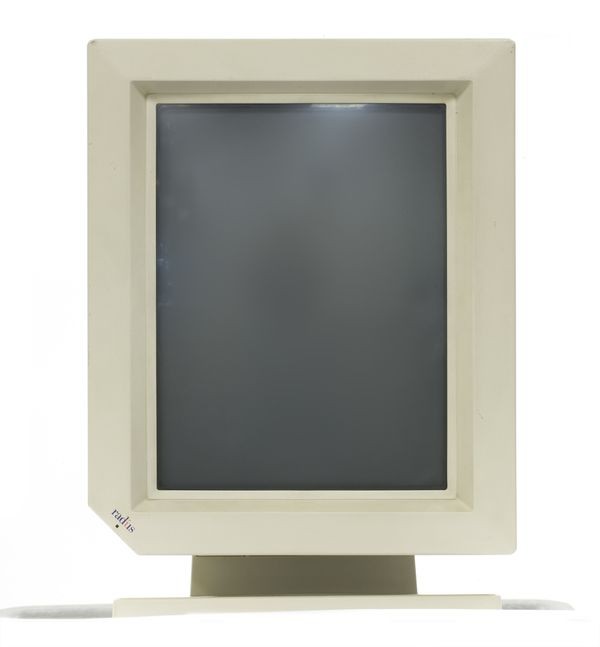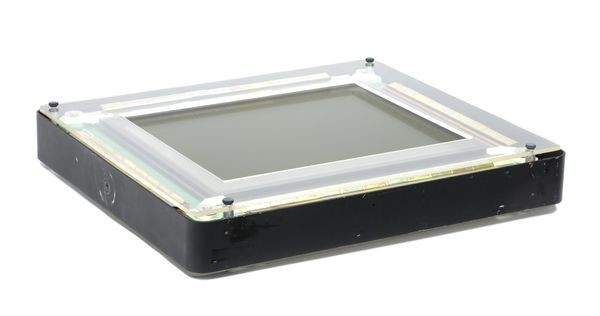Video Displays
Ivan Sutherland demonstrating Sketchpad on the TX-2
Sutherland demonstrates the Sketchpad program, part of his MIT PhD thesis and generally recognized as the first computer-aided drafting (CAD) program. Drawings were highly structured. Changing a master object template changed all instances of its use.
Video Displays
Pictures are worth a thousand words—and most people more readily “look” than read. Video displays satisfy that instinct. They also let us see and act on information as soon as the computer generates it.
Analog radar displays date from World War II. Video displays for digital computers were developed in the early 1950s for MIT’s Whirlwind computer and for Ferranti Canada’s DATAR multi-ship naval defense computer.
Initially, video was expensive, both in dollars and computing power. For years, only research and the military, where power and cost were secondary concerns, used video.
Circular monitor display for Whirlwind
Whirlwind, operational in 1951, may have been the first computer to display text and graphics on a video terminal.
View Artifact DetailLight pen and interface box (prototype)
Light pens were developed about 1952 to select points on the video display of MIT’s Whirlwind computer. One disadvantage was that you couldn’t point to a dark area.
View Artifact DetailAirborne SAGE radar
Aircraft fed radar data to SAGE air-defense computers. A small light pen for graphical input is in the operator’s right hand.
View Artifact DetailSpiral scanner
Scanner operators were busy: they analyzed experimental data by simultaneously using two computer monitors, a projector showing an image on the desktop, a trackball pointing device and a one-handed keypad. The computer in the background is a DEC PDP-4.
View Artifact DetailVideo Displays in all Sizes
Most early computer displays used bulky CRTs - cathode ray tubes - like those inside televisions at the time. Some scanned horizontal lines in sequence, like a TV, and others could draw in an arbitrary order.
Experiments with flat display panels started in the 1960s, but it took thirty years for them to become dominant, as they are today.
VT04 Graphic Display system console
This video console, with light pen and digitizing tablet, was part of the Graphic-15 Graphic Display System, a DEC PDP-15 computer accessory.
View Artifact DetailTektronix 4012 Graphics Terminal
Tektronix’s 4010-class terminals used special video storage-tube displays. They provided good-quality graphics without expensive memory, but users could only erase the whole screen at once. Two thumbwheels provided basic cursor control.
View Artifact DetailVT100 video terminal keyboard
An Intel 8080 CPU provided the VT100 with advanced features such as bold characters and multiple text and graphic character sets. Its success inspired other terminal makers to emulate those features.
View Artifact DetailLiveboard interactive video display
Liveboard was a pen-based, networked, interactive “whiteboard” supporting multiple remote documents. PARC’s Ubiquitous Computing program developed Liveboard; a spin-off company offered a commercial version. By 2000, more than 2,000 Liveboards had been sold.
View Artifact DetailPlasma video display
PLATO educational computer system terminals used plasma displays in 1964. Because the displays stored images independently, they didn’t require extra computer memory.
View Artifact DetailBraille display (prototype)
This prototype display evolved into a portable “reader” that converted scanned text into tactile output for blind users.
View Artifact DetailVT100 terminal
An Intel 8080 CPU provided the VT100 with advanced features such as bold characters and multiple text and graphic character sets. Its success inspired other terminal makers to emulate those features.
View Artifact DetailTI-99/4 home computer color monitor
Home computers in 1979 often used television sets as displays. But TI’s computer-to-TV adapter (radio frequency modulator) was not yet FCC-approved, so TI had Zenith modify a standard TV to allow direct connection to the new TI-99/4 home computer.
View Artifact DetailColor Pivot video monitor
This monitor rotated between portrait and landscape orientations, automatically reformatting the displayed material. It was convenient, but cost almost $1,700.
View Artifact DetailIBM 581 plasma video display (prototype)
This prototype plasma display was released in 1984, just as laptop computers were beginning to appear on the market. Its flat shape was attractive, but liquid-crystal displays ultimately dominated.
View Artifact Detail
